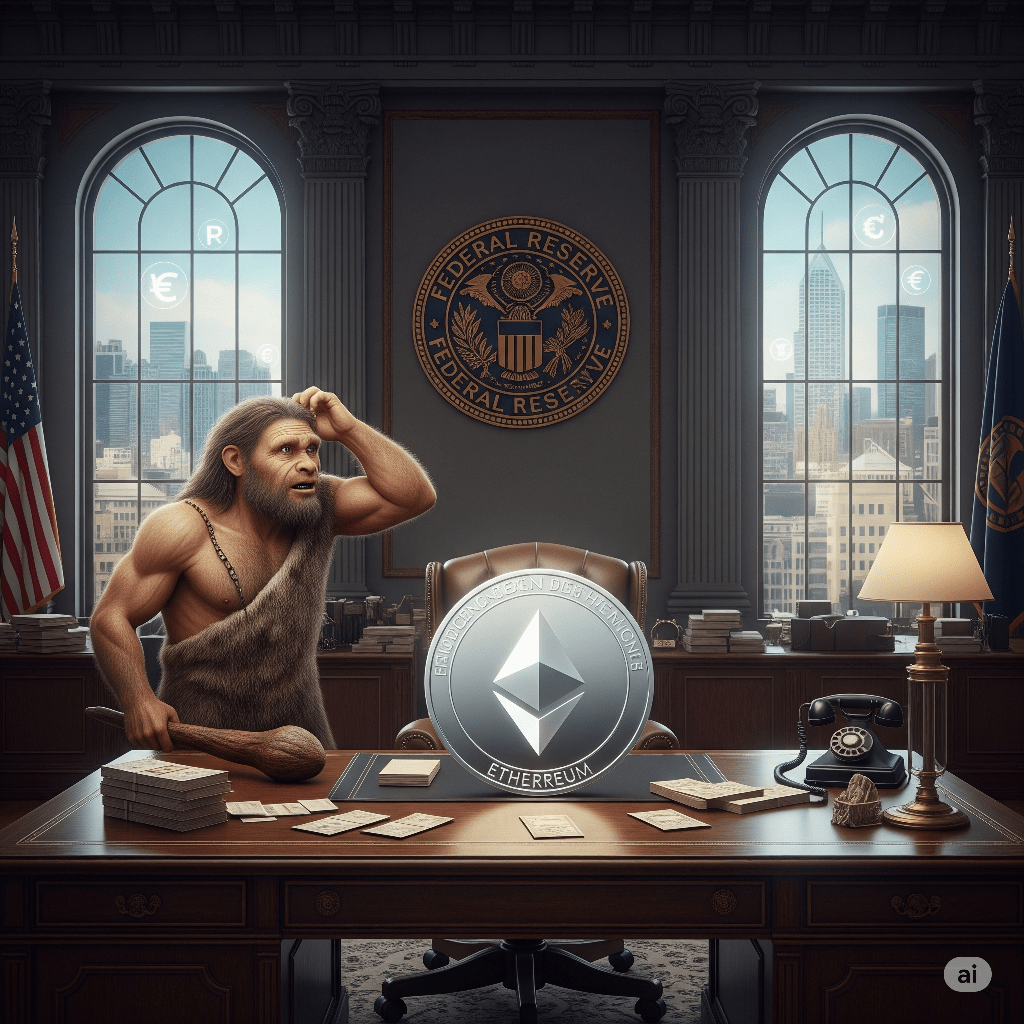
The Fed at a crossroads: A policy of the past for America's "new" future
The Federal Reserve, under the leadership of Jerome Powell, operates with a target rate of 2% that seems to be an anachronism. This monetary policy, inherited from a bygone economic era, relies on traditional mechanisms such as interest rate adjustments. However, it is facing the harsh realities of the 21st century, risking not only to stifle innovation but also to become ineffective in the face of profound transformations in the American economy. Is the Fed's approach critical at the risk of becoming obsolete and betraying the promise of a new era of prosperity?
The Fed's lag: A brake on innovation and growth
The Fed's policy is designed for an industrial economy where growth is driven by credit and consumption. Its 2% target is a legacy of a time when inflation was a systemic risk. However, the new American economy, driven by disruptive innovation, is rewriting the rules. The major projects of tomorrow's humanity — artificial intelligence, space travel, quantum computing, robotics, autonomous vehicles, or initiatives like Starlink — are not financed through traditional bank loans. They operate in markets of a completely different order, attracting massive capital, often foreign, that is not sensitive to fluctuations in interest rates set by the Fed.
In this context, Jerome Powell's restrictive monetary policy is a real hindrance. By increasing financing costs, the Fed does not penalize inflation related to global value chains, but makes it more difficult for startups and companies building the nation's future to access capital. It risks stifling a technological revolution that is supposed to restore America's greatness. This policy is in stark contrast to the vision of a country that bets on deregulation and innovation to propel itself to the forefront of the global race.
Perpetual hyper-liquidity: A system that never sleeps
While the Fed insists on regulating a 20th-century financial system, a revolution is unfolding in parallel: that of blockchain and digital assets. This new infrastructure is creating a global hyper-liquidity that bypasses the traditional banking system and renders the Fed's policy increasingly ineffective.
Stablecoins and Tokenization: The issuance of dollar-backed stablecoins allows capital to be transferred instantly, without having to go through banks or adhere to time zones. The tokenization of assets (Real-World Assets or RWA) such as real estate or bonds transforms illiquid markets into tradable assets 24/7. These innovations create a continuous flow of capital that can enter and exit the American market at any time, rendering monetary policies based on stock exchange opening hours nearly obsolete.
Private Ownership and Uncensorship: This decentralized system, free from intermediaries, gives total control of their assets to their owners through cryptographic keys. It allows investors from around the world to bypass banking restrictions and capital controls of their own countries, thereby enhancing the reach of the American market. The inability of this system to be censored makes it particularly attractive for capital seeking total freedom, simultaneously weakening the Fed's power over these new financial flows.
A Fed overwhelmed by a vision of the future
In this context of accelerated change, the Fed's policies seem frozen in the past. Targeting 2% is a goal that ignores the era of abundance that could be unleashed by new technologies. By slowing down the economic engine for the sake of a digital stability target, the Fed risks missing the true growth opportunity.
This vision of a "new" United States, deregulated, focused on innovation, and driven by open markets, stands in opposition to a monetary policy perceived as a brake on American power. It is a paradox that summarizes the current debate: the central bank wants to temper the economy, while technology and new political forces push it to move forward. The question is no longer whether the Fed will reach its target of 2%, but whether this target still makes sense in a world that, thanks to technology, is constantly seeking new frontiers.


